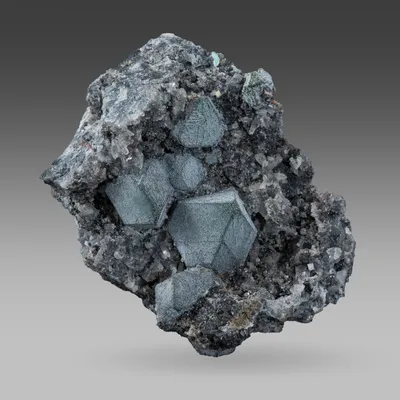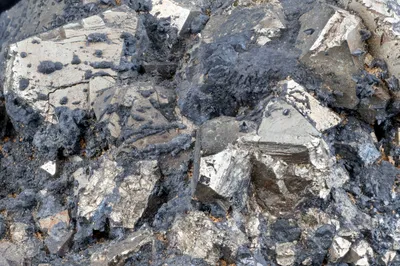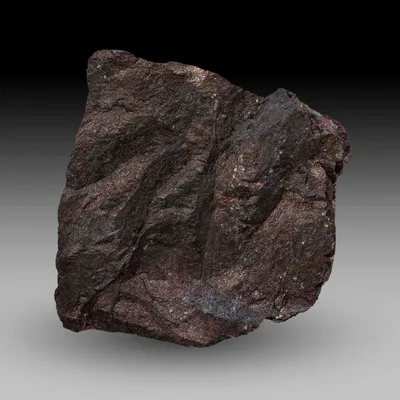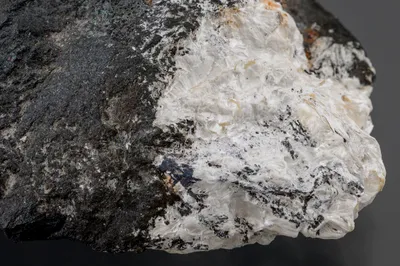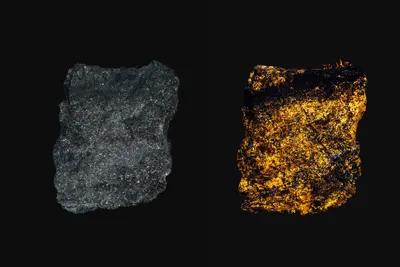Mineral Species
Germanite
Type Locality
Yes
Composition
Cu26Fe4Ge4S32
Crystal System
Cubic
Status at Tsumeb
Confirmed (type locality)
Abundance
Common
Distribution
First and second oxidation zones; sulphide ores
Paragenesis
Hypogene
Entry Number
Species; TSNB148
Type Mineralogy
Gebhard (1999) credited Wilhelm Klein as the discoverer of germanite but, while some credit is indeed due to Klein, his role in the discovery was subordinate to that of Hans Schneiderhöhn. Bartelke (1976) records that a pinkish sulphide mineral was noted as a component of massive sulfide ores by Schneiderhöhn as early as 1915 but that he was unable to isolate sufficient material for analysis. Schneiderhöhn (1920) described this mineral as "Rosa Erz" believing it to be a sulphide of iron and copper.
In 1921, Klein found "pure" examples of this same sulphide mineral in massive form, identified by a reddish appearance on freshly broken surfaces, and with the approval of the OMEG general manager, F. W. Kegel, sent specimens to Berlin for analysis. The unknown mineral was found to be a sulphide of copper, iron and germanium (containing 6.2 wt % Ge) and was described as a mineral new to science by Pufahl (1922) who named it germanite in allusion to the germanium content. Type material is conserved at the Natural History Museum in London (catalogue number BM.1922,1180).
General Notes
Germanite was discovered in the upper levels of the mine (first oxidation zone) and was the first germanium mineral discovered at Tsumeb. Lombaard et al. (1986) noted that the distribution of germanium minerals (including germanite) is "highly irregular".
Klein (1938) described "…rough cords of germanite passing through rich tennantite sections in the eastern ore body…" between depths of 140 m and 180 m (roughly corresponding to between 5 and 7 levels). This is consistent with the record that a body of massive germanite totalling 28 tonnes was mined on 6 Level (Lombaard et al. 1986). Hughes (1987) stated that "Bodies of massive germanite were stoped from 5 and 6 levels at Tsumeb, including 100 tonnes of massive germanite".
According to Lombaard et al. (1986) germanite was recorded between 5 Level and 31 Level, while renierite was absent above 15 Level, but recorded down to 40 Level. They pointed out large fluctuations in the germanite : renierite ratio, from 2:5 on 20 Level, to 1:28 on 30 Level.
Gebhard (1999) noted that a second germanite-rich ore zone was encountered between 20 and 26 levels, yielding rare crystals of germanite (to 5 mm) in cavities in the ore.
A further discovery of germanite-bearing ore was made in the third oxidation zone between 45 and 47 levels (Gebhard 1999). While Gebhard gave no date for this discovery it presumably post-dated the 1986 assertion of Lombaard et al. that germanite had not been recorded below 31 Level. This third oxidation zone occurrence yielded a 30 mm tetrahedral crystal of germanite with its faces hosting numerous tiny crystals of luzonite (see Gebhard 1999, page 147).
Germanite is a common mineral at Tsumeb but it normally occurs as minute single grains and aggregates disseminated in massive sulphide ore or in host dolomite (Sclar and Geier 1957). Larger masses of germanite are much less common (Keller 1977a). Associated sulphide minerals include bornite, chalcocite, colusite, enargite, galena, gallite, pyrite, renierite, sphalerite and tennantite.
Sclar and Geier (1957) made a detailed study or germanium-rich ore from 24 Level and concluded that germanite is an early mineral in the sulphide paragenesis at Tsumeb but that much of it is subsequently replaced by renierite.
Geier and Ottemann (1970b) noted the presence of tungsten-bearing, molybdenum-bearing and vanadium-bearing varieties of germanite. They concluded, however, that only tungsten enters the germanite lattice (as a replacement for iron) and proposed the name "tungsten-germanite" for this variety. They considered the molybdenum enriched analysis to be due to the presence of minute but discrete inclusions of molybdenite.
It should be noted, however, that three new members of the germanite group have been described subsequently. Ovamboite (IMA 1992-039), for which Tsumeb is the type locality (Spiridonov 2003) corresponds to the "tungsten-germanite" of Geier and Ottemann (1970b); germanocolusite (IMA 1991-044; see Spiridonov 1992; Spiridonov et al. 1992) almost certainly corresponds to the vanadium-enriched germanite that was mis-interpreted by Geier and Ottemann (1970b) and maikainite (IMA 1992-038; see Spiridonov 2003) almost certainly corresponds to the molybdenum-enriched germanite, again mis-interpreted by Geier and Ottemann (1970b). Please refer to the sections on these minerals for further information.
Most, if not all, secondary Ge- and Ga- bearing minerals tend to occur on altered germanite-bearing sulphide ores.
Associated Minerals
abellaite; anglesite; argutite; argyrodite (?); azurite; bartelkeite; bianchite (?); bornite; brindleyite; brunogeierite; calcite; chalcocite; chalcopyrite; chlorargyrite; colusite (?); corkite; digenite; dzhalindite; edwardsite; eyselite; famatinite (?); fleischerite; galena; gallite; gallobeudantite; galloplumbogummite; germanocolusite; gordaite (?); gunningite; hydroboracite (?); jeanbandyite; karlseifertite; köttigite; krieselite; ktenasite; lauraniite; lazaridisite; lepidocrocite (?); ludlockite; luzonite; mathewrogersite; mawsonite; molybdenite; niedermayrite; otjisumeite; ovamboite; plumbogummite; pyrite; pyromorphite; renierite; rutile; schaurteite; sewardite; siderite; söhngeite; sphalerite; stannite; stottite; tennantite-(Zn); thaumasite; tsumebite; tsumgallite; tungstenite



